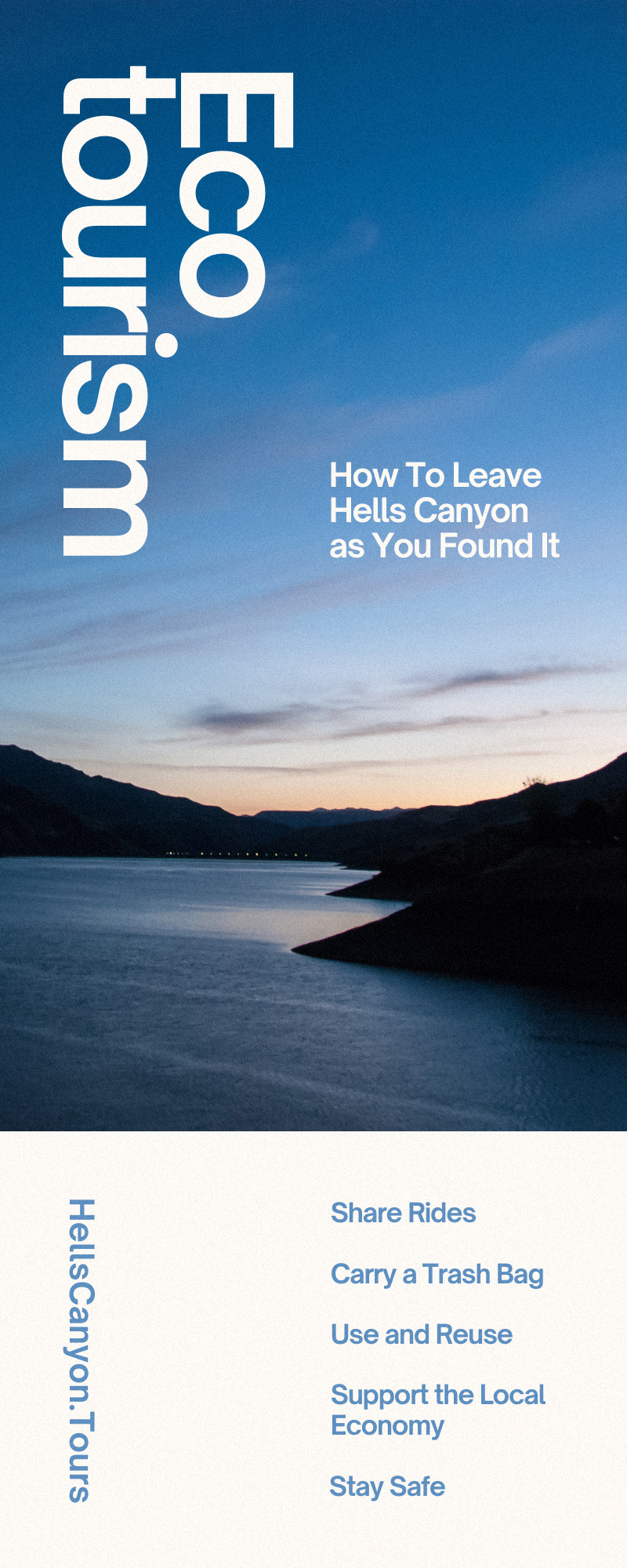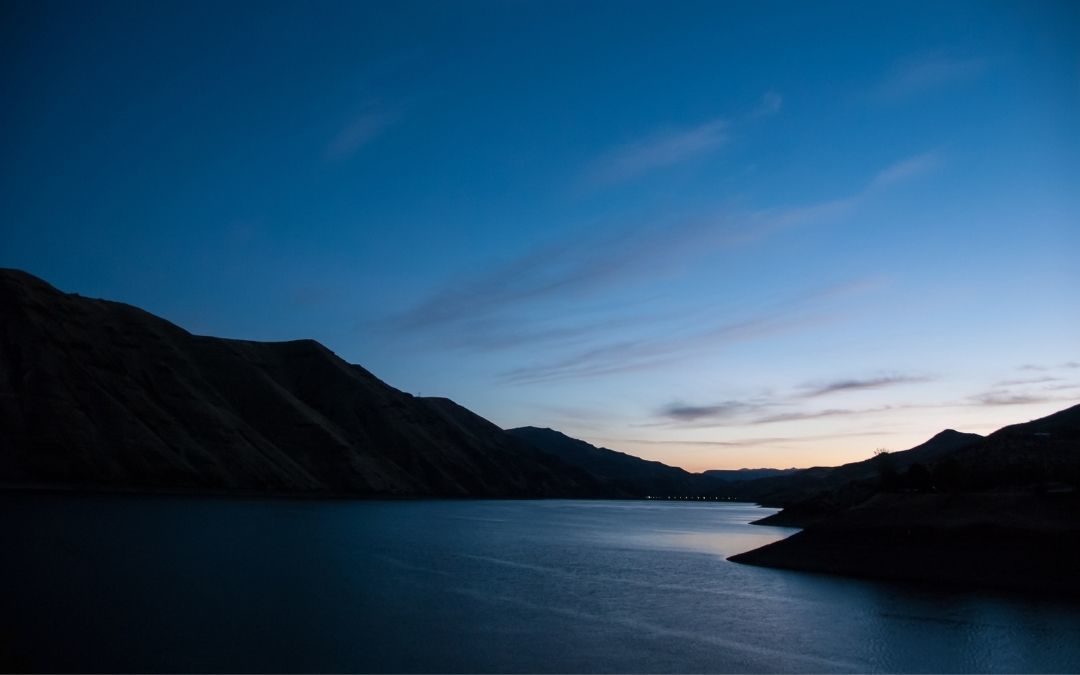What is ecotourism, exactly? At its most core level, it’s the practice of traveling responsibly and being mindful of the environment. Wherever you travel in nature, you are a visitor. Treat the land like a house you’re visiting for the first time. The planet Earth is made up of millions of smaller ecosystems, each with a delicate balance to maintain. If you disrupt those ecosystems on your jaunt through nature, it could cause significant problems for the environment.
Luckily, it’s not difficult to be a responsible tourist and a proper steward of the environment around you. Hells Canyon, the deepest river gorge in North America, has thousands of years’ worth of history. Geographical changes carved it into its majestic peaks and valleys, and local indigenous tribes like the Nez Perce have been caring for the land for millennia. When you visit, you can do your part in caring for the land as well.
When you visit Hells Canyon, remember: take only photos, and leave only footprints. Let’s learn more about how to leave Hells Canyon as you found it.
Share Rides
Share transportation with others whenever you reasonably can. Carpool with your traveling companions instead of taking separate cars. Make your fishing trip a collaborative affair and share a boat with friends or family instead of fishing separately.
River Adventures makes the rideshare process easy with the best Hells Canyon jet boat tours and guided fishing trips. We can take all of you where you need to go in one trip, reducing carbon emissions and energy usage. Cut down on the number of boats on the water or cars on the road by consolidating. Take advantage of a jet boat ride with other travelers and have a great time without putting undue stress on the environment.
Carry a Trash Bag
Littering is rude and unacceptable—of course you know that, but people who visited before you may not have been so careful. If you see any pieces of litter like snack wrappers or cigarette butts while you’re hiking, stop and pick them up. Leave the land in better condition than you found it.
You’ll probably stop for a snack once or twice during your adventure, too. Stash empty snack bags and any other refuse in a small, portable receptacle like an old grocery bag. When you return from your outdoor activities for the day, you can dispose of your trash properly.
If your snacks include fruits like apples, oranges, or bananas, you may be tempted to ditch the core or peel. After all, it’s natural and biodegradable, right? Still, avoid dropping litter of any kind. You don’t know how fragile the ecosystems around you are, and even a rogue banana peel can upset them.
Use and Reuse
If you scrunch your nose at the thought of carrying a bag of litter with you, think about ways you can avoid generating waste in the first place. Instead of single-use plastic water bottles, bring a reusable one that holds a lot of liquid (between 32 and 64 oz).
If you pack snacky foods like homemade trail mix, invest in a few reusable sandwich bags or pouches (or make your own). Plenty of outdoor enthusiasts have switched from plastic baggies to fabric pouches and bags.
Support the Local Economy
Even before you reach Hells Canyon itself, support local businesses along the way. Eat at mom-and-pop restaurants instead of chain locations. This can give you an opportunity to learn about the area from the people who live there.
While you’re visiting the canyon, focus your attention on locally owned and operated businesses like River Adventures. If you want to buy souvenirs or trinkets to bring home with you, seek out local artisans and craftspeople. Many indigenous Americans support themselves through their highly skilled craftsmanship, perfected over generations of hard work and innovation. Show your appreciation for the folks that have been caring for the land since long before you got there! Remember—supporting artists and businesses in the area boosts the local economy.
Stay Safe
It sounds like such a platitude—of course you want to stay safe on your journey. But you can achieve two goals at once by prioritizing safety! When you steer clear of dangerous situations, you’re more likely to leave no trace of your visit.
The Snake River in Hells Canyon is an extremely popular fishing spot. Enthusiasts go on guided fishing tours, take their boats out on the water, or sit on the riverbed waiting for a bite. If you decide to go fishing, make sure you keep sharp objects such as hooks, bait, and knives secure. When you pack up to leave, scan your area for bits and pieces. Avoid leaving behind any stray hooks or sharp bits to preserve the safety of both human visitors and local wildlife. You never know when a wild animal will injure itself on a discarded fishing hook.
Speaking of animals, you’ll see a wide variety of them as you hike the canyon’s plethora of trails. Many of those animals may even look cute and friendly! The canyon is home to many species of deer and elk. Resist the urge to reach out and touch one, and whatever you do, do not feed the wildlife. Your food could potentially make an animal sick. In addition, when wild animals get accustomed to having humans feed them, they’ll be more likely to seek out human interaction, which can become dangerous. Let the wilderness sustain itself and admire the local fauna from a safe distance.
Next time you visit Hells Canyon, take a little extra time to plan a green vacation. What can you do to maximize your enjoyment of the wilderness while respecting and caring for your surroundings? Simple: learn to leave Hells Canyon as you found it before you head home. Clean up after yourself when you’re done fishing, eating, or exploring. If you see litter on the ground from someone who visited before you, pick it up. You are sharing the canyon with many species of wild flora and fauna, as well as local residents and other travelers, so be kind to your surroundings. Take plenty of photos from a safe distance, be responsible with your trash, and leave no trace of yourself behind.


Recent Comments